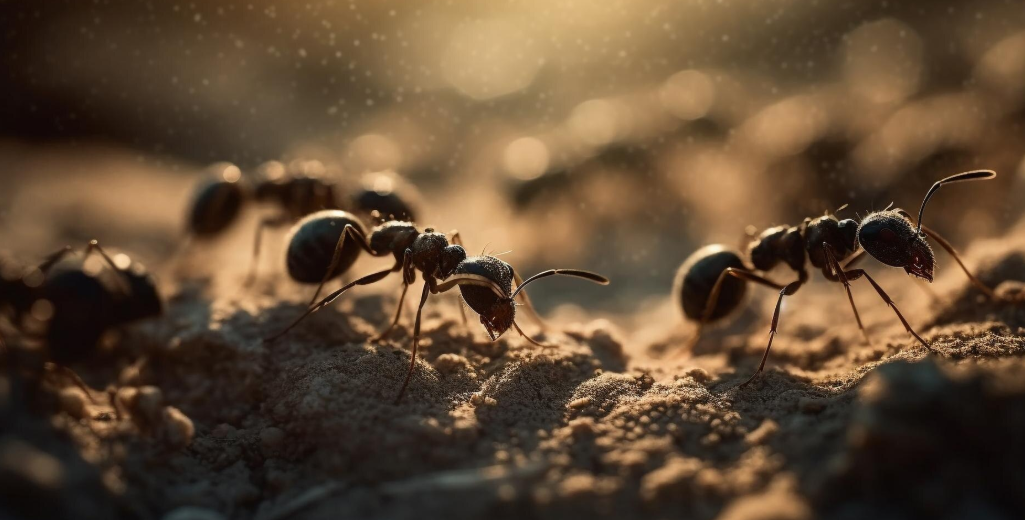Cultural Interpretations of Household Visitors: Understanding Traditional Beliefs About Ants and Lizards
Throughout human history, various cultures have developed intricate belief systems that attribute meaning to natural phenomena and animal encounters within domestic spaces. These traditional interpretations, ranging from ancient folklore to modern spiritual practices, offer fascinating insights into how different societies understand the relationship between humans and the natural world. Two creatures that frequently appear in homes—ants and lizards—have particularly rich symbolic traditions that continue to influence contemporary cultural practices and beliefs.
Traditional Beliefs About Ant Appearances in Homes
Ancient Weather Prediction Systems
Historical records indicate that ancient civilizations developed sophisticated observational systems for predicting environmental changes based on animal behavior. One such belief, passed down through generations, suggests that sudden appearances of large ant swarms entering homes may indicate impending flooding or severe weather conditions. This interpretation likely arose from practical observations of ant behavior patterns, as these insects often relocate their colonies when sensing changes in humidity, barometric pressure, or ground moisture levels that precede significant weather events.
Modern entomological research supports some aspects of these traditional observations. Ants possess highly sensitive environmental detection capabilities and often exhibit behavioral changes in response to atmospheric conditions. Their ability to sense vibrations, chemical changes, and moisture fluctuations makes them remarkably accurate indicators of approaching environmental shifts. While contemporary meteorological science provides more reliable weather prediction methods, these traditional interpretations demonstrate the sophisticated observational skills of early civilizations.
Feng Shui Perspectives on Ant Colonies
Within the framework of feng shui, an ancient Chinese practice focused on harmonizing individuals with their surrounding environment, ant infestations carry specific significance related to structural integrity and energy flow. According to feng shui principles, ants establishing permanent colonies within homes, particularly those that create extensive tunnel networks penetrating foundations or walls, indicate serious structural concerns that extend beyond physical damage to affect the property’s energetic qualities.
This perspective emphasizes that extensive ant nesting activities can compromise both the physical foundation of a structure and its spiritual energy balance. The practice suggests that deeply embedded ant colonies with multiple branches throughout foundations or walls may weaken construction quality and disrupt positive energy flows that contribute to residents’ well-being and prosperity.
However, feng shui traditions also distinguish between permanent infestations and temporary visits. Brief appearances of ants that quickly establish temporary shelters before departing are generally considered less concerning, often attributed to seasonal patterns, weather changes, or natural migration cycles that don’t significantly impact the home’s energy balance.
Color-Based Symbolic Interpretations
Traditional belief systems have developed nuanced interpretations based on ant species and coloration, each carrying distinct symbolic meanings:
Red Ants: In many cultural traditions, red ants entering homes are interpreted as harbingers of good fortune and beneficial assistance. These appearances are often associated with the arrival of helpful individuals or “noble persons” who will provide support during challenging times. The red coloration is traditionally linked to prosperity, energy, and positive transformation.
Black Ants: Black ant appearances are frequently interpreted as indicators of distinguished visitors or important news. Traditional beliefs suggest that such encounters signal upcoming changes in family fortunes, often in positive directions. The black coloration is associated with wisdom, depth, and significant life changes.
Winged Ants: Flying ants or those with visible wings are often considered less favorable omens in traditional interpretation systems. These appearances may be viewed as warnings about potential challenges or the need for increased caution in personal or professional matters.
Cultural Significance of Lizard Encounters
Protective Symbolism and Natural Guardianship
Across numerous cultural traditions, lizards entering homes are interpreted as protective presences rather than unwelcome intruders. This symbolism stems from several observed characteristics of lizard behavior and their ecological role within human environments. Their remarkable agility, survival skills, and ability to thrive in diverse conditions have led many cultures to associate them with protection against negative energies and misfortune.
The practical benefits of lizard presence in homes support these positive interpretations. As natural predators of insects, spiders, and other small pests, lizards function as biological pest control agents, reducing populations of disease-carrying insects and other unwanted creatures. This ecological service has contributed to their positive reputation in many traditional belief systems.
Spiritual Messaging and Life Transitions
Various spiritual and metaphysical traditions interpret lizard appearances as meaningful communications about personal growth and adaptation. These belief systems suggest that lizard encounters occur during significant life transitions, serving as reminders about the importance of flexibility, resilience, and adaptability when facing change.
The timing of lizard appearances is often considered significant in these interpretational frameworks. Encounters during periods of uncertainty, career changes, relationship transitions, or other major life events are viewed as particularly meaningful, suggesting that individuals should embrace their natural ability to adapt and thrive in new circumstances.
The Metaphor of Regeneration and Release
One of the most powerful symbolic associations with lizards relates to their remarkable ability to detach and regenerate their tails when threatened. This natural defense mechanism has become a potent metaphor in many cultural traditions, representing the importance of releasing what no longer serves personal growth or well-being.
Traditional interpretations suggest that lizard encounters may signal the need to evaluate current life circumstances and consider releasing unhealthy relationships, limiting beliefs, negative emotional patterns, or situations that prevent personal progress. The regenerative aspect of tail regrowth symbolizes the potential for renewal and positive change following the release of harmful elements.
Scientific Perspectives on Animal Behavior
Environmental Factors Influencing Indoor Appearances
Modern scientific understanding provides context for these traditional interpretations by explaining the environmental factors that drive ants and lizards to enter human dwellings. Seasonal changes, weather patterns, food availability, and habitat disruption all influence animal movement patterns and can result in increased encounters with these creatures in domestic settings.
Ant colonies may relocate during rainy seasons, drought conditions, or when their natural habitats are disturbed by construction, landscaping, or other human activities. Understanding these patterns helps distinguish between temporary visits and signs of permanent establishment that might require intervention.
Similarly, lizards may enter homes while hunting for food, seeking shelter during adverse weather conditions, or when their natural habitats are disrupted. Their presence often indicates healthy ecosystem balance, as they typically inhabit areas with adequate insect populations to support their dietary needs.
Ecological Benefits and Natural Balance
Both ants and lizards play crucial roles in maintaining ecological balance within and around human environments. Ants contribute to soil aeration, seed dispersal, and decomposition processes, while also controlling populations of other insects. Lizards provide natural pest control services, reducing reliance on chemical interventions for managing unwanted insects.
These ecological contributions support the positive interpretations found in many traditional belief systems, suggesting that encounters with these creatures often indicate healthy environmental conditions rather than problems requiring immediate intervention.
Practical Approaches to Household Encounters
Respectful Coexistence Strategies
Many traditional cultures emphasize respectful treatment of animals that enter human spaces, reflecting broader philosophical principles about harmonious relationships with nature. These approaches often recommend observation and minimal intervention unless health or safety concerns require more active management.
For ant encounters, traditional wisdom suggests distinguishing between temporary visits and permanent establishment. Brief appearances during seasonal transitions or weather changes are often viewed as natural phenomena requiring no intervention, while extensive colony development may necessitate professional assessment of potential structural concerns.
Natural Management Approaches
When intervention becomes necessary, traditional practices often emphasize natural methods that minimize harm to the animals while addressing human concerns. These approaches include:
Environmental Modification: Adjusting moisture levels, food availability, and access points to make indoor environments less attractive to unwanted visitors without causing harm to the animals themselves.
Barrier Methods: Using natural deterrents such as specific scents, textures, or materials that encourage animals to seek alternative locations without toxic exposure.
Professional Consultation: Seeking guidance from pest management professionals who can assess situations and recommend appropriate interventions when traditional methods prove insufficient.
Contemporary Relevance and Application
Integration with Modern Lifestyle
Understanding traditional interpretations of animal encounters can enhance contemporary relationships with nature, even in urban environments. These perspectives encourage mindful observation of natural phenomena and recognition of the interconnected relationships between human activities and local ecosystems.
Modern applications of traditional wisdom might include viewing unexpected animal encounters as opportunities for reflection about current life circumstances, environmental awareness, or the need for greater attention to home maintenance and structural integrity.
Cultural Sensitivity and Respect
Approaching these traditional beliefs with respect and cultural sensitivity allows for appreciation of diverse worldviews and wisdom traditions without requiring personal adoption of specific interpretations. Understanding the cultural contexts from which these beliefs emerge enhances cross-cultural communication and appreciation for the sophisticated observational systems developed by various civilizations.
Conclusion
Traditional interpretations of ant and lizard appearances in homes reflect sophisticated understanding of animal behavior, environmental patterns, and symbolic thinking that has developed across cultures and generations. While contemporary scientific knowledge provides additional context for understanding these encounters, traditional wisdom offers valuable perspectives on human-nature relationships and opportunities for personal reflection.
Whether viewed through the lens of cultural tradition, spiritual practice, or ecological science, encounters with ants and lizards in domestic spaces invite consideration of our relationship with the natural world and the meanings we derive from these interactions. These perspectives remind us that even common household visitors can serve as catalysts for deeper reflection about our environment, our relationships, and our place within larger natural systems.
By approaching these encounters with curiosity, respect, and openness to multiple interpretational frameworks, we can enrich our understanding of both traditional wisdom and contemporary ecological knowledge while fostering more harmonious relationships with the creatures that share our living spaces.






